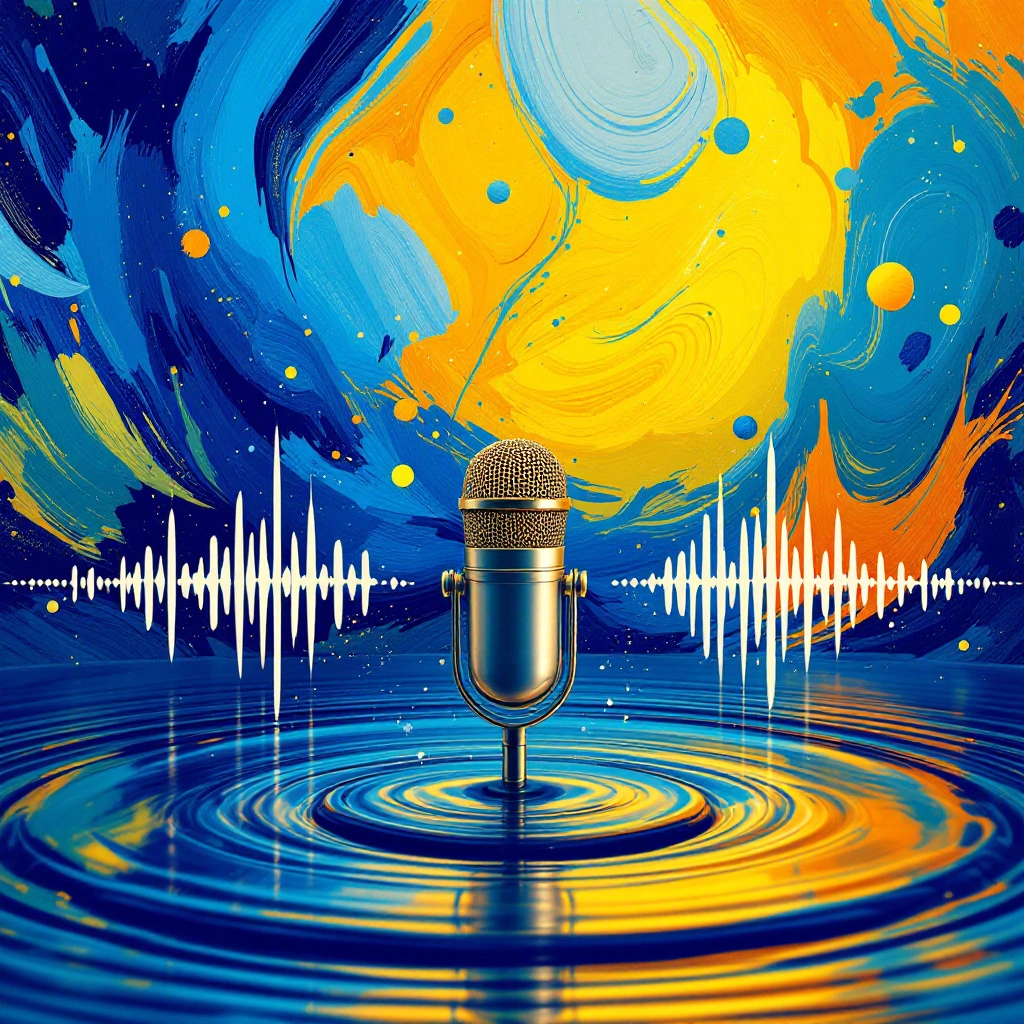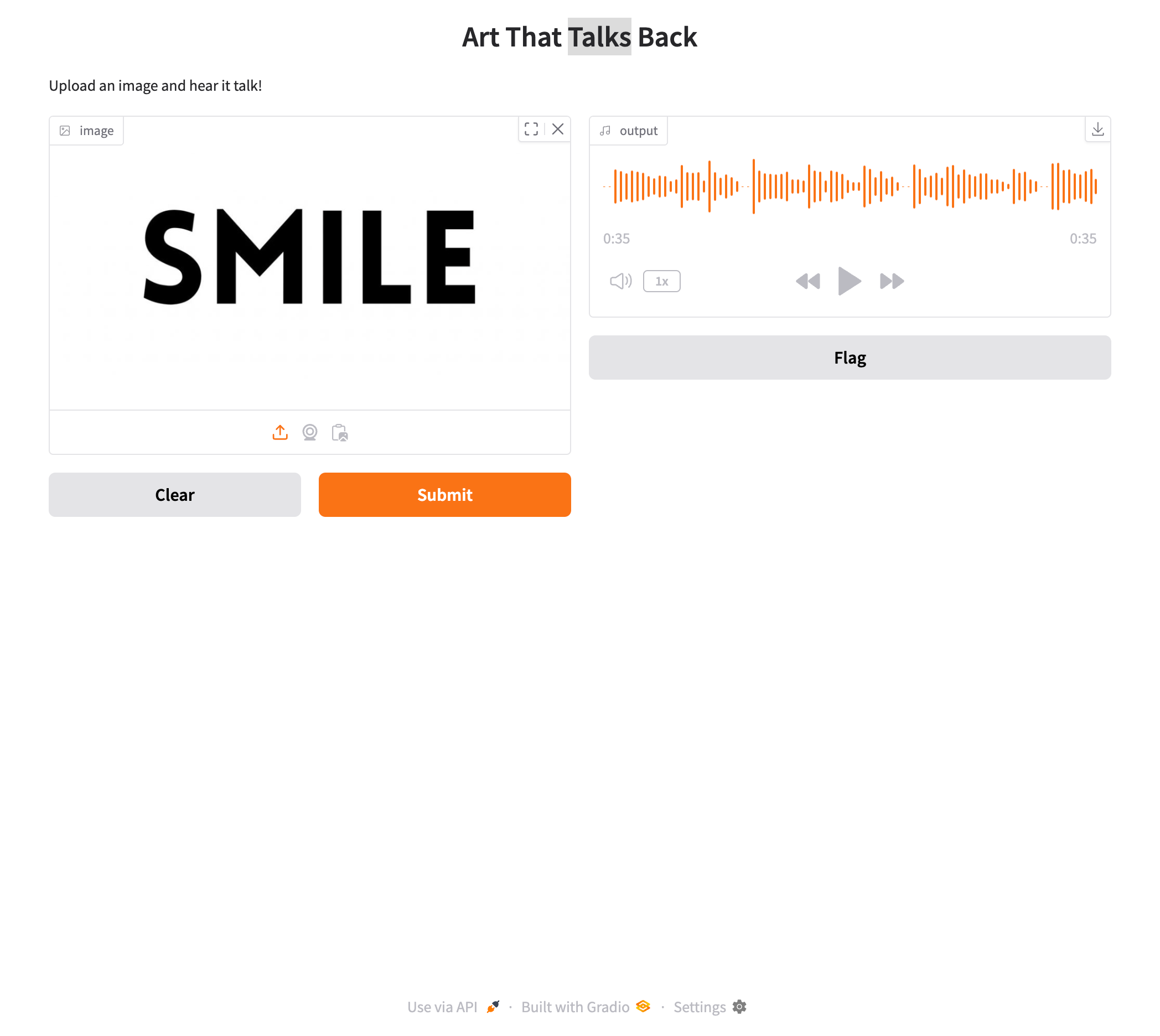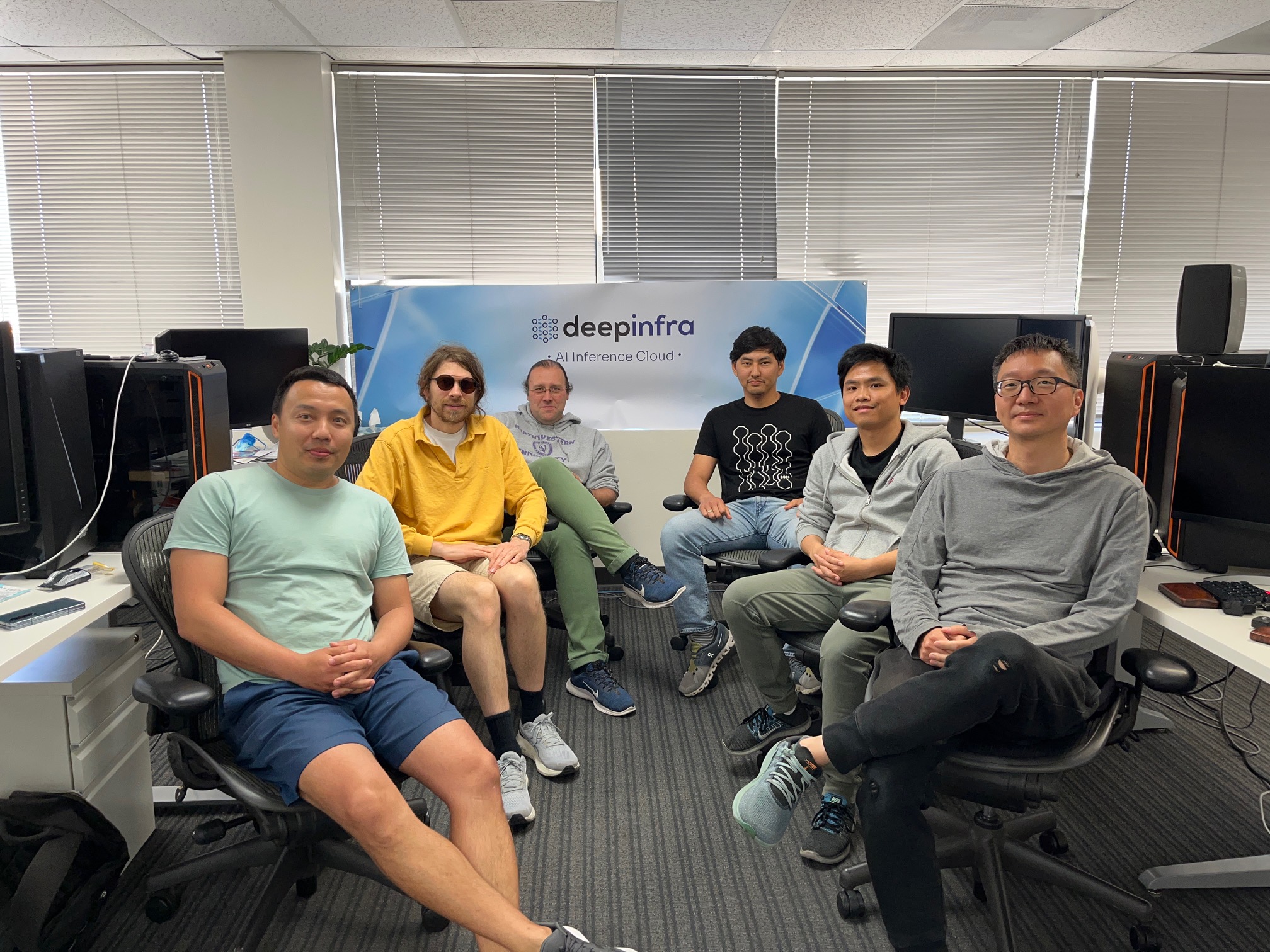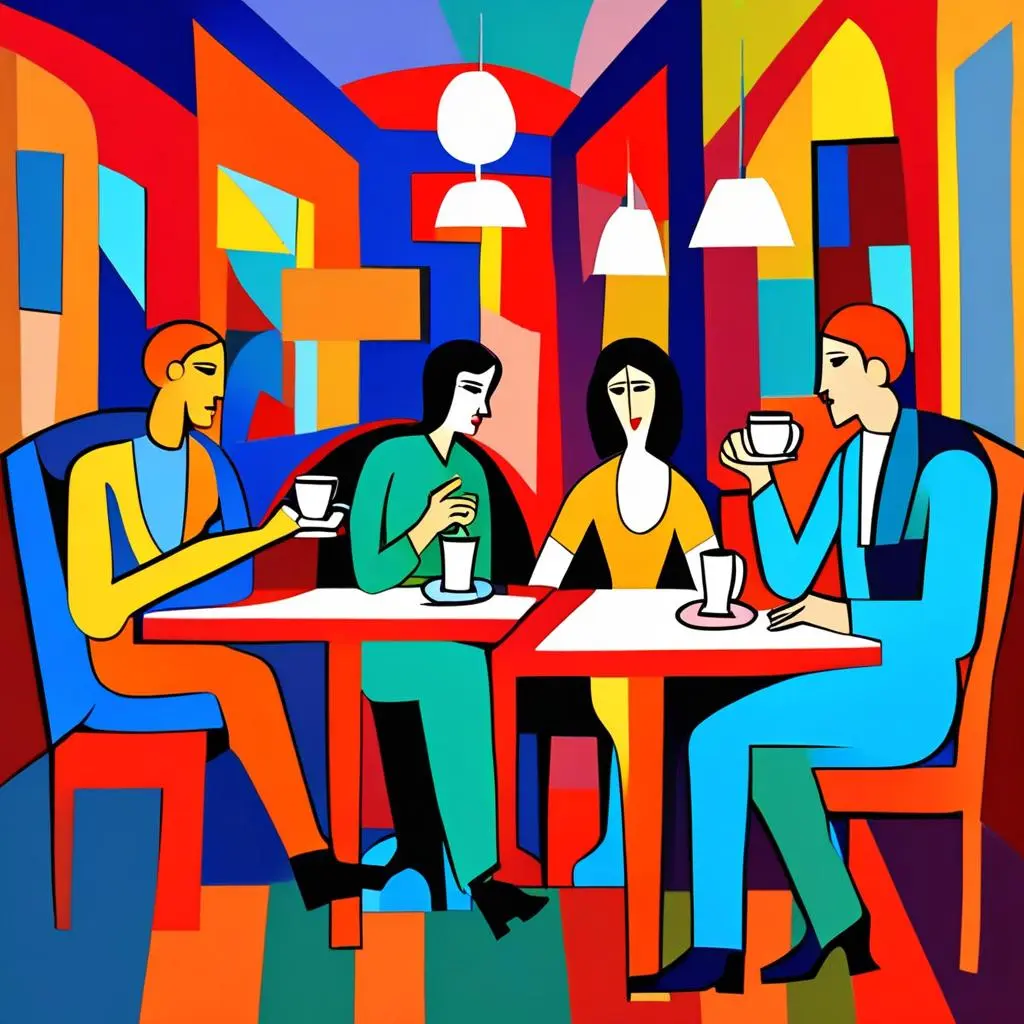FLUX.2 is live! High-fidelity image generation made simple.

Imagine going to an art gallery where paintings tell their stories. That’s what "Talking Images" do in practice. This tutorial shows you how to make art speak using DeepInfra models. We are going to use:
1-) deepseek-ai/Janus-Pro-7B
2-) hexgrad/Kokoro-82M
Setting Up Environment
First, let’s set up your environment. You’ll need these packages. Here’s the content of requirements.txt:
gradio
requests
python-dotenv
pillow
scipy
numpy
Venv Environment Setup
Show Venv Tutorial
python -m venv venv && (venv\Scripts\activate.bat 2>nul || source venv/bin/activate) && pip install -r requirements.txt
Create .env File
Next, create a .env file in your project folder. Copy your DEEPINFRA_API_TOKEN into it. Your .env file should look like this:
DEEPINFRA_API_TOKEN=your-api-token-here
Replace your-api-token-here with your actual DeepInfra API token.
The Code
Here’s the Python code that makes your images talk. It uses Janus-Pro-7B to describe the image and Kokoro-82M to turn that description into audio.
import os
from io import BytesIO
import gradio as gr
import base64
import requests
from dotenv import load_dotenv, find_dotenv
from scipy.io import wavfile
import numpy as np
_ = load_dotenv(find_dotenv())
def analyze_image(image) -> str:
url = "https://api.deepinfra.com/v1/inference/deepseek-ai/Janus-Pro-7B"
headers = {"Authorization": f"bearer {api_token}"}
buffered = BytesIO()
if image.mode == "RGBA":
image = image.convert("RGB")
format = "JPEG" if image.format == "JPEG" else "PNG"
image.save(buffered, format=format)
files = {"image": ("my_image." + format.lower(), buffered.getvalue(), f"image/{format.lower()}")}
data = {
"question": "I am this image. You must describe me in my own voice using 'I'. State my colors, shapes, mood, and any notable features with precise detail. Examples: 'I have clouds,' 'I contain sharp lines.' Be vivid, thorough, and factual."
}
response = requests.post(url, headers=headers, files=files, data=data)
return response.json()["response"]
def text_to_speech(text: str) -> tuple:
url = "https://api.deepinfra.com/v1/inference/hexgrad/Kokoro-82M"
headers = {
"Authorization": f"bearer {api_token}",
"Content-Type": "application/json"
}
data = {
"text": text
}
response = requests.post(url, json=data, headers=headers)
res_json = response.json()
audio_base64 = res_json["audio"].split(",")[1]
audio_bytes = base64.b64decode(audio_base64)
audio_io = BytesIO(audio_bytes)
sample_rate, audio_data = wavfile.read(audio_io)
return sample_rate, audio_data
def make_image_talk(image):
description = analyze_image(image)
sample_rate, audio_data = text_to_speech(description)
return sample_rate, audio_data
if __name__ == "__main__":
api_token = os.environ.get("DEEPINFRA_API_TOKEN")
interface = gr.Interface(
fn=make_image_talk,
inputs=gr.Image(type="pil"),
outputs=gr.Audio(type="numpy"),
title="Art That Talks Back",
description="Upload an image and hear it talk!"
)
interface.launch()
Final Look

Try It Yourself!
Ready to hear your own art talk back? Grab yourself an image, run the code, and upload it. Do not forget to follow us on Linkedin and on X.
 A Milestone on Our Journey Building Deep Infra and Scaling Open Source AI InfrastructureToday we're excited to share that Deep Infra has raised $18 million in Series A funding, led by Felicis and our earliest believer and advisor Georges Harik.
A Milestone on Our Journey Building Deep Infra and Scaling Open Source AI InfrastructureToday we're excited to share that Deep Infra has raised $18 million in Series A funding, led by Felicis and our earliest believer and advisor Georges Harik. GLM-4.6 API: Get fast first tokens at the best $/M from Deepinfra's API - Deep Infra<p>GLM-4.6 is a high-capacity, “reasoning”-tuned model that shows up in coding copilots, long-context RAG, and multi-tool agent loops. With this class of workload, provider infrastructure determines perceived speed (first-token time), tail stability, and your unit economics. Using ArtificialAnalysis (AA) provider charts for GLM-4.6 (Reasoning), DeepInfra (FP8) pairs a sub-second Time-to-First-Token (TTFT) (0.51 s) with the […]</p>
GLM-4.6 API: Get fast first tokens at the best $/M from Deepinfra's API - Deep Infra<p>GLM-4.6 is a high-capacity, “reasoning”-tuned model that shows up in coding copilots, long-context RAG, and multi-tool agent loops. With this class of workload, provider infrastructure determines perceived speed (first-token time), tail stability, and your unit economics. Using ArtificialAnalysis (AA) provider charts for GLM-4.6 (Reasoning), DeepInfra (FP8) pairs a sub-second Time-to-First-Token (TTFT) (0.51 s) with the […]</p>
 Seed Anchoring and Parameter Tweaking with SDXL Turbo: Create Stunning Cubist ArtIn this blog post, we're going to explore how to create stunning cubist art using SDXL Turbo using some advanced image generation techniques.
Seed Anchoring and Parameter Tweaking with SDXL Turbo: Create Stunning Cubist ArtIn this blog post, we're going to explore how to create stunning cubist art using SDXL Turbo using some advanced image generation techniques.
© 2025 Deep Infra. All rights reserved.

